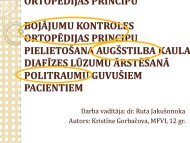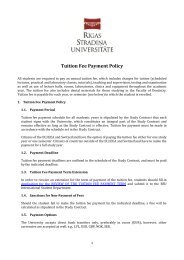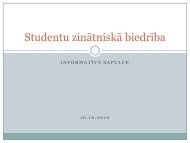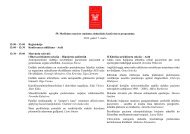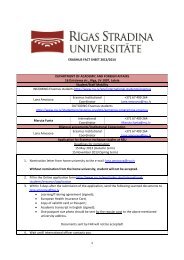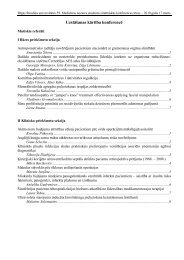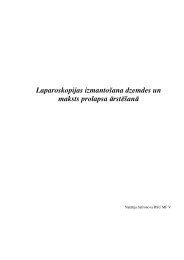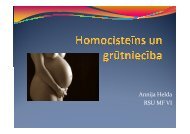History of Latvia: a Brief Survey
History of Latvia: a Brief Survey
History of Latvia: a Brief Survey
- No tags were found...
Create successful ePaper yourself
Turn your PDF publications into a flip-book with our unique Google optimized e-Paper software.
12th century-1914The Age <strong>of</strong>German, Polish,Swedish, and RussianRule in <strong>Latvia</strong>Because <strong>of</strong> its strategic geographic location, the <strong>Latvia</strong>n territory was frequentlyinvaded by neighbouring nations, largely defining the fate <strong>of</strong> <strong>Latvia</strong> and its people.By the late 12th century, <strong>Latvia</strong> was increasingly visited by traders from WesternEurope who used <strong>Latvia</strong>’s longest river, the Daugava, as a trade route to Russia.Compared with other countries around Europe, Christianity arrived in the territory <strong>of</strong><strong>Latvia</strong> relatively late. German traders appeared at the close <strong>of</strong> the 12th century, bringingwith them missionaries who attempted to convert the pagan Baltic and Finno-Ugriantribes to the Christian faith. Out <strong>of</strong> loyalty to their ancient pantheistic beliefs, the Baltsresisted the imposition <strong>of</strong> a foreign religion, especially the ritual <strong>of</strong> christening.In 1198 Pope Innocent III proclaimed a crusade against the Baltic peoples, without anysignificant results. In 1199 Albert <strong>of</strong> Buxhoeveden (c.1165-1229) was named as a Bishop<strong>of</strong> Ikšķile — also where the first western church in the territory <strong>of</strong> <strong>Latvia</strong> was located. Heconvinced Innocent III to proclaim a second Baltic crusade. In the spring <strong>of</strong> 1200, twenty-three8A fragment <strong>of</strong> the Latin text <strong>of</strong> the‘Heinricus’ Livonian Chronicle’ (HeinriciChronicon Livoniae), which depictedevents in the territory <strong>of</strong> <strong>Latvia</strong> between1180 and 1227. In this fragment, from a17th century copy <strong>of</strong> the chronicle, thefoundation <strong>of</strong> Rīga in 1201 is described.The emblem <strong>of</strong> the Livonian Brothers<strong>of</strong> the Sword, later called the LivonianOrder.The seal <strong>of</strong> Bishop Albert, the founder<strong>of</strong> Rīga, 1225.



